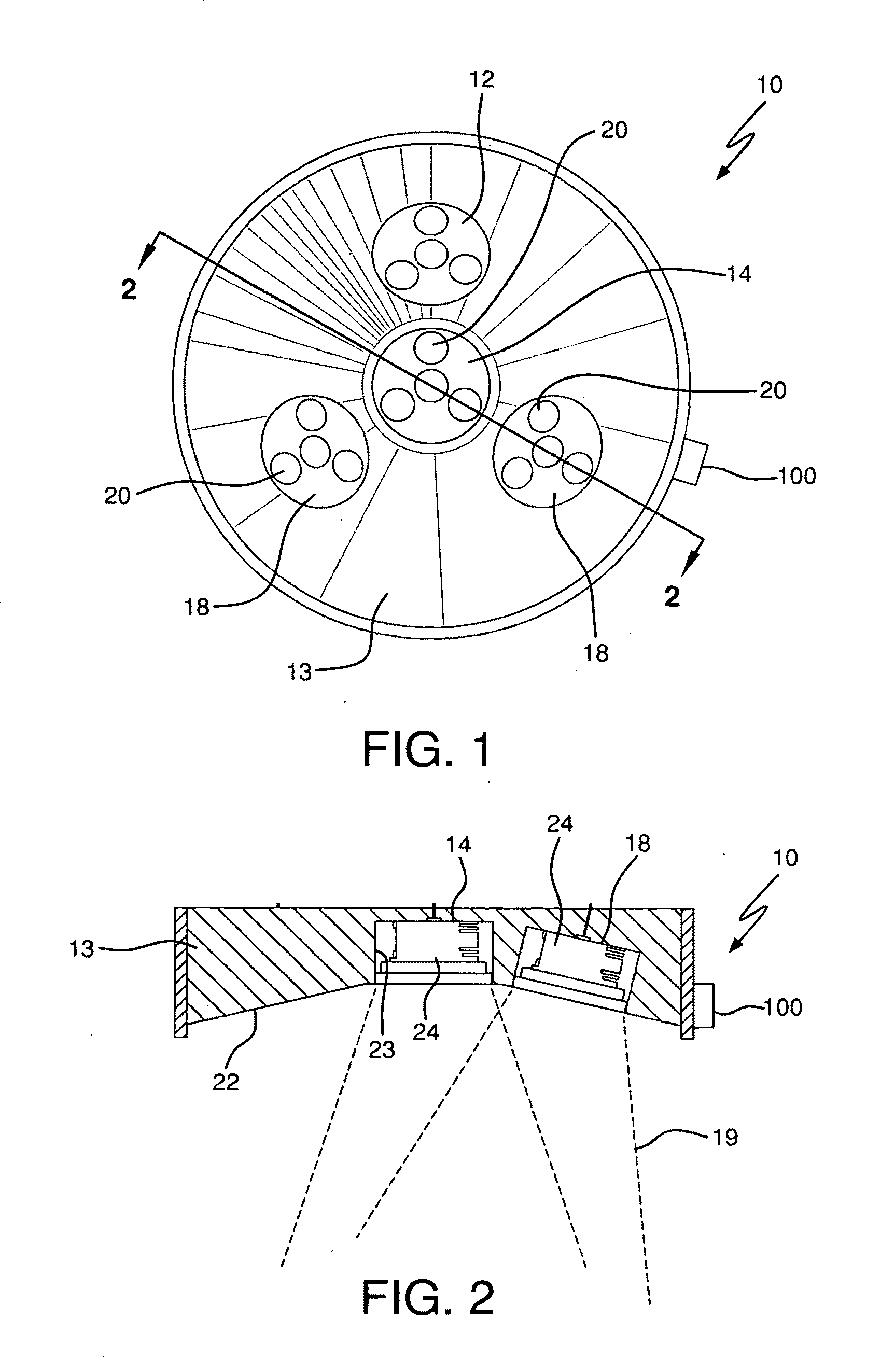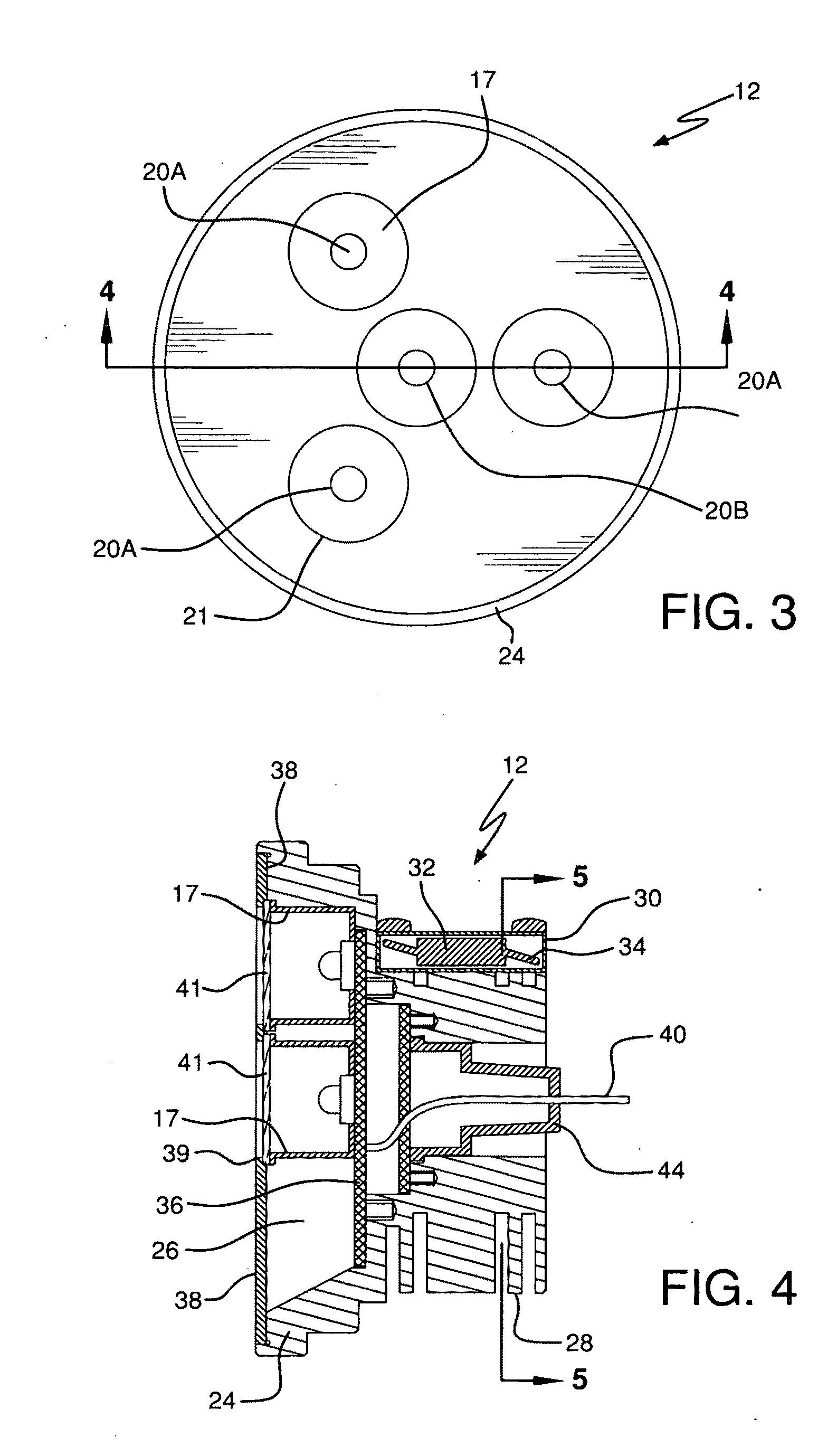Modular lamp head and assembly for non-destructive testing
a module lamp and non-destructive technology, applied in the field of modules for non-destructive testing, can solve the problems of low light intensity, dangerous darkness, and the loss of fluorescence ability of fluorescent materials,
- Summary
- Abstract
- Description
- Claims
- Application Information
AI Technical Summary
Benefits of technology
Problems solved by technology
Method used
Image
Examples
Embodiment Construction
[0035]It will be appreciated by those skilled in the art that the present invention may be practiced in various forms and configurations. This detailed description of the disclosed embodiments is presented for purposes of clarity of understanding only, and no unnecessary limitations should be implied therefrom.
[0036]Referring to FIG. 1, one embodiment of a lamp or lamp assembly 10 is shown which includes a plurality of modular heads or modules 12 mounted in a housing 13, each module including at least one light-emitting diode (LED). In one embodiment, the lamp assembly preferably includes a central module 14 containing at least one white LED 20 emitting full or substantially full spectrum (white) light. One or more peripheral modules 18 are oriented around the central module. In one embodiment, the lamp preferably includes three peripheral modules arranged in a triangular pattern around the central module; however, one of ordinary skill in the art will realize that the peripheral mo...
PUM
 Login to View More
Login to View More Abstract
Description
Claims
Application Information
 Login to View More
Login to View More - R&D
- Intellectual Property
- Life Sciences
- Materials
- Tech Scout
- Unparalleled Data Quality
- Higher Quality Content
- 60% Fewer Hallucinations
Browse by: Latest US Patents, China's latest patents, Technical Efficacy Thesaurus, Application Domain, Technology Topic, Popular Technical Reports.
© 2025 PatSnap. All rights reserved.Legal|Privacy policy|Modern Slavery Act Transparency Statement|Sitemap|About US| Contact US: help@patsnap.com



